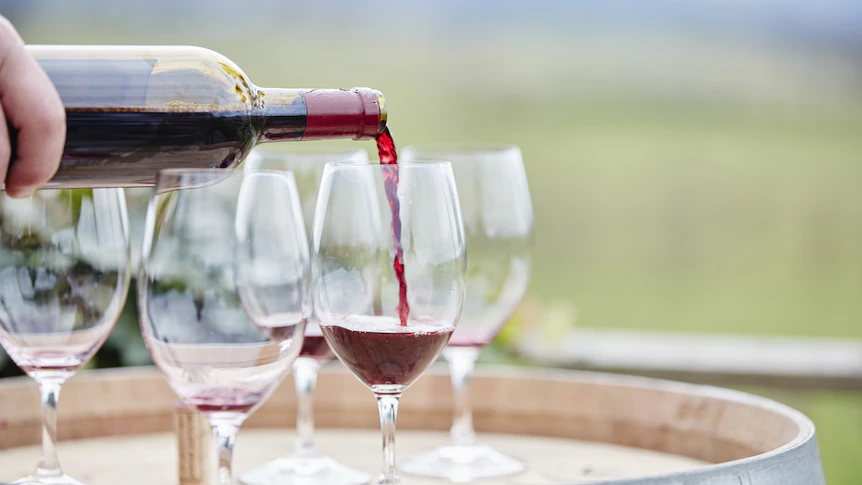Featured in ABC News, March 2020
If you think you know what wine you’re drinking, you could be wrong — and that fancy bottle of red could be contributing to a trade that rips $70 billion a year from the global wine industry.
Key points:
- Counterfeit wine can involve replacing the liquid or faking labels
- It has become a global problem, particularly for premium wine
- A Perth company is now using technology to fight back

According to estimates, counterfeit wine affects up to 20 per cent of the global $350 billion wine industry.
Now the industry is turning to technology to fight back, in the form of “smart” bottle tops.
Perth company Cellr is offering a product to tackle the fake wine market, with the technology integrated directly into the bottles.
The caps contain Near Field Communication (NFC) and Radio Frequency Identification (RFID) chips, which can be scanned by an accompanied mobile application.
The application then instantly confirms the product’s provenance, producer and, optionally, brand or promotional messaging.

The company has now received $150,000 in funding from the Federal Government, through its Advanced Manufacturing Growth Centre, to extend the product’s rollout.
Small and Family Business Minister Michaelia Cash said the technology had the potential to be game changing.
“This is a global issue, counterfeiting wine,” she said. “And to have an Australian start-up literally invent what is going to, I hope, become a global solution is absolutely outstanding.”
The company has also received support from wine services company Portavin and the South West Development Commission.
Giving wine a ‘digital birth certificate’
Co-founder Chris Braine said the technology allowed wineries to produce a “digital birth certificate” with every bottle.
“So some of these [production] lines are running 18,000 to 45,000 bottles an hour,” he said.

“Our technology allows us to create a unique individual birth certificate for each of those products, which is then resurfaced anywhere, any time around the world via the mobile phone.”
Mr Braine said counterfeit wine was a massive issue globally.
“There’s a lot through the Asian regions which is … closer to 70 per cent, give or take,” he said.
“But as a global footprint, the majority of production is happening through Europe, the US and Australia has obviously been targeted more heavily in recent times.

“The solution needs to be embedded in the bottling process and not something that’s cosmetic.
“QR codes and stickers on bottles, for example, are … solutions which exist in the market place today and can be copied in the millions.
“So we’ve gone about re-engineering the capsule that gets [the technology] embedded with tamper-proof evidence and a binary state — that means we can have a live state and a dead state within a bottle.”
What constitutes counterfeit?
Mr Braine said the types of counterfeit wine operations varied around the world, with examples ranging from refilling bottles to manufacturing fake labels.
“[There was] an example in the south of France where 10 million litres … was driven across the border from Spain, bottled under a premium name and sold off in that sense as a premium price point,” he said.

Wines of Western Australia chief executive Larry Jorgensen said premium brands were often targeted.
“I don’t think it’s really a problem in Australia, it’s more of an international issue at this point in time,” he said.
“There are issues around what the provenance of the wine is.
“So growing wine in a place that is easy to grow grapes in a very high volume and produce high volumes of wine, that could be used in place of regions where it’s more difficult to grow high volumes, but it’s easier to produce quality wine.”
Mr Jorgensen said it was important that consumers knew what they were buying.

“There’s the price differential for a start, there’s a premium there,” he said.
“There are extensive additional inputs to growing premium wine and I guess at the end of the day they’re luxury products so there’s a brand there to be protected.”
Cost borne by producers
Mr Jorgensen said all producers within the wine industry needed to come up with a solution together.
“What everybody is wondering is what will be the system that is adopted, because you really want broad coverage in the market if it’s going to have any impact,” he said.
“And secondly [you have to see] what the cost of doing that is.
“You do have to look a number of things in terms of your supply chain, in terms of how it will be managed.”
Mr Braine said he had received a good response from the WA industry so far.
“Not only from the counterfeit space but also on the direct-to-consumer marketing front,” he said.
The company is aiming for a price point of between 5 and 10 cents.
A pilot program is scheduled to take place in the coming months, while the product could hit shelves in a trial later this year.
By Benjamin Gubana, ABC News. Published,10 Mar 2020

